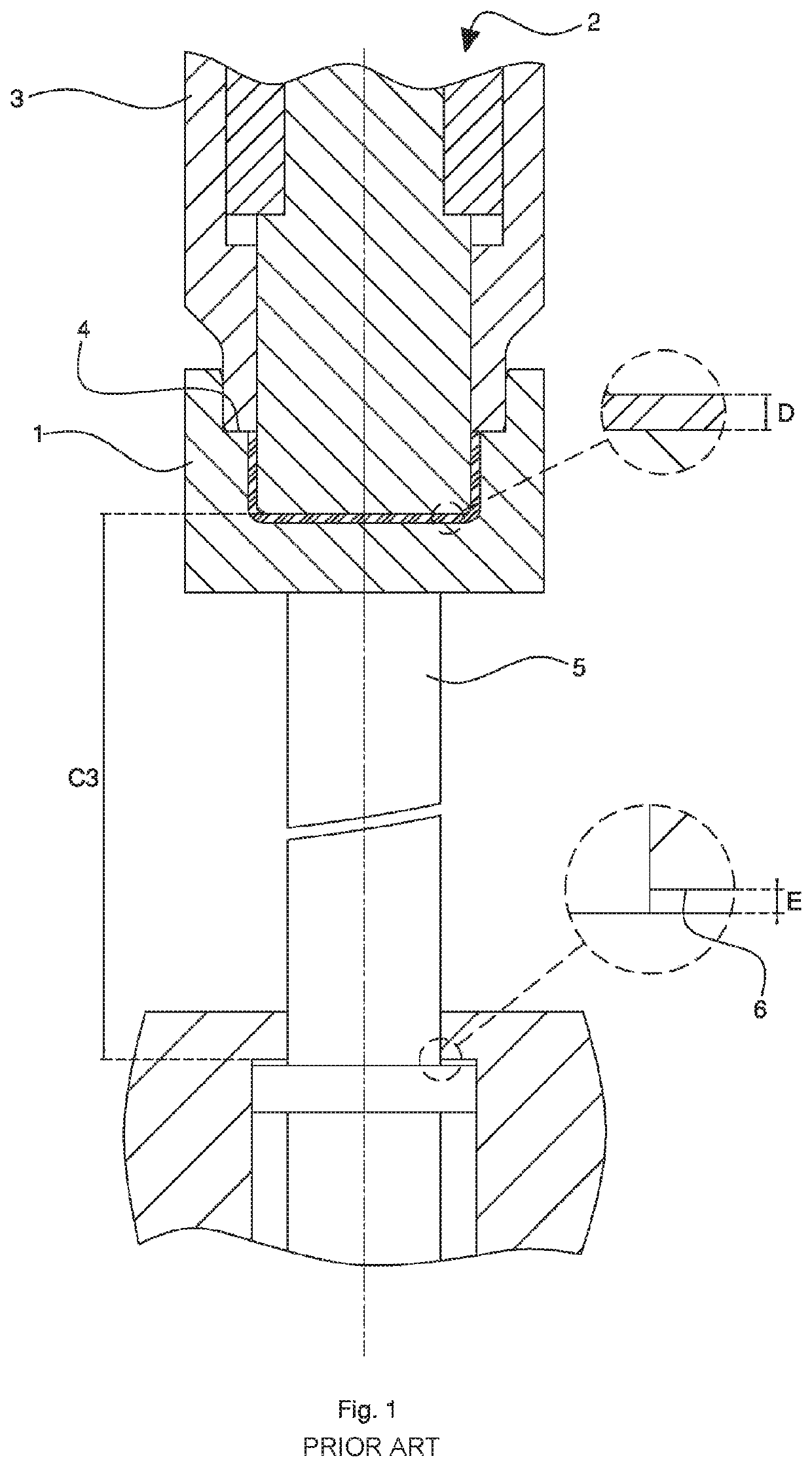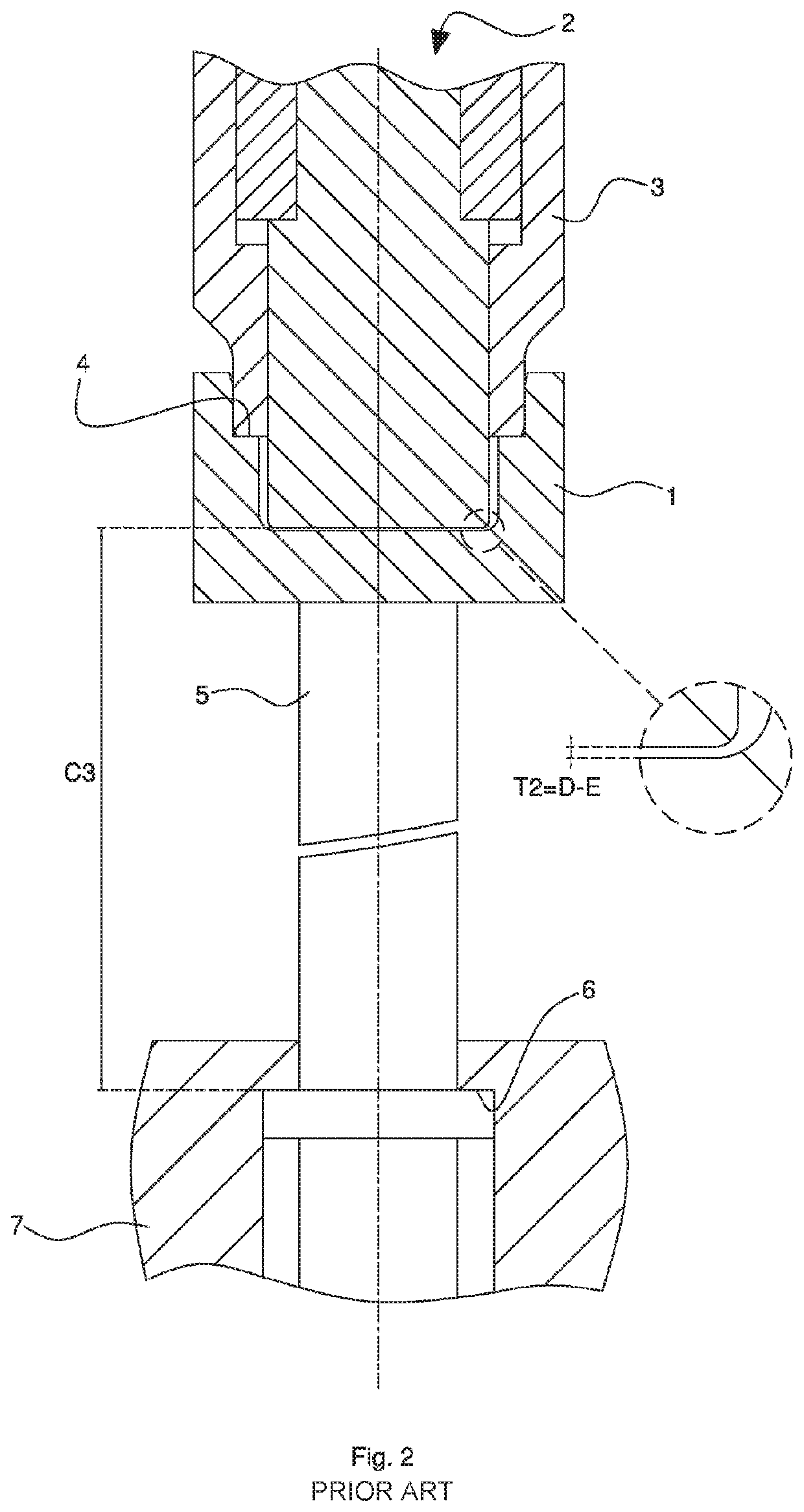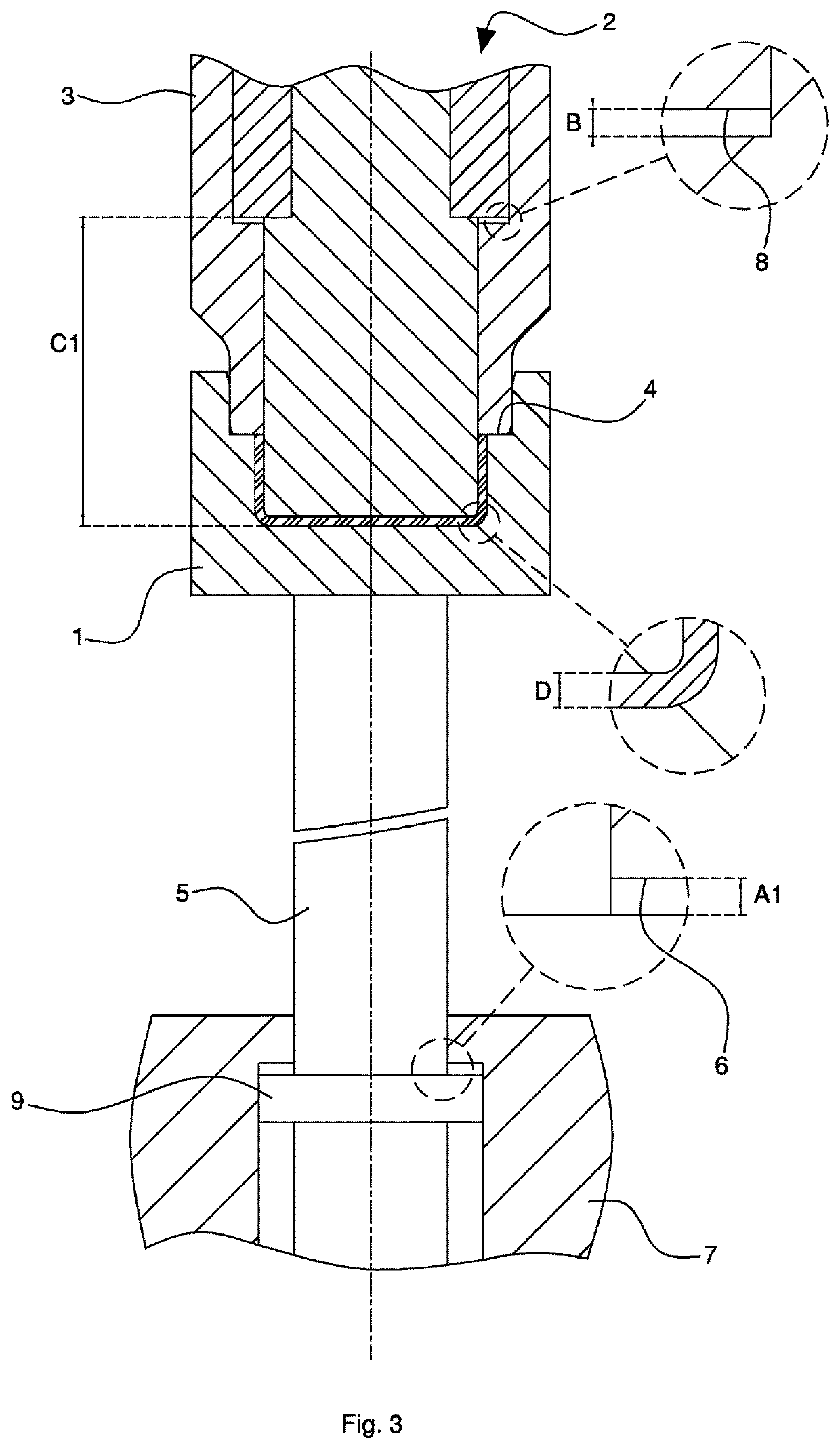Compression mold
a mold and compression technology, applied in the field of molds, can solve the problems of hard contact risk, drawbacks of the known mold described above, and thin bottom thickness d of the object to be formed
- Summary
- Abstract
- Description
- Claims
- Application Information
AI Technical Summary
Benefits of technology
Problems solved by technology
Method used
Image
Examples
Embodiment Construction
[0066]In this description, similar elements in common with different mold examples illustrated in the FIGS. 1 to 12 have been shown with the same numbers and similar elements in common with different examples of cap bodies illustrated in FIGS. 13 to 30 have been shown with the same numbers.
[0067]Referring to the FIGS. 3 and 4, a mold example for compression molding doses of plastic material according to an embodiment of the invention is illustrated. The mold includes a first (lower) half-mold 1 and a second (upper) half-mold 2 being axially movable (with vertical X axis) towards each other in order to assume an open position (not shown) in which it is possible to insert at least one dose of plastic material (coming from an extruder) between the above-mentioned half-molds and a non-end closed position (FIG. 3) or closed position with a dose, in which the dose of plastic material (in the pasty state) can be pressed in a cavity at least partially defined by the above-mentioned half-mol...
PUM
| Property | Measurement | Unit |
|---|---|---|
| distance | aaaaa | aaaaa |
| distance T1 | aaaaa | aaaaa |
| distance T1 | aaaaa | aaaaa |
Abstract
Description
Claims
Application Information
 Login to View More
Login to View More - R&D
- Intellectual Property
- Life Sciences
- Materials
- Tech Scout
- Unparalleled Data Quality
- Higher Quality Content
- 60% Fewer Hallucinations
Browse by: Latest US Patents, China's latest patents, Technical Efficacy Thesaurus, Application Domain, Technology Topic, Popular Technical Reports.
© 2025 PatSnap. All rights reserved.Legal|Privacy policy|Modern Slavery Act Transparency Statement|Sitemap|About US| Contact US: help@patsnap.com



